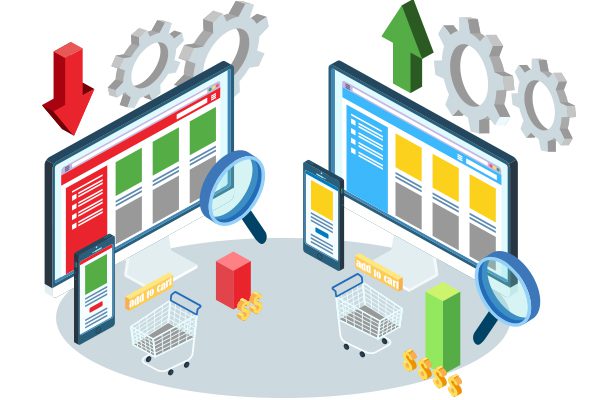Google’s Smart Shopping intelligent machine learning has been transforming how brands are performing in the Shopping segment. The average Smart Shopping campaign increases conversion value 30% over a standard campaign. For more information on determining if Smart Shopping is a good fit for your brand, please reference this blog post.
In a dynamic market – such as what the world is experiencing due to COVID-19 – unprecedented change cause businesses can be affected in different ways and make it harder to predict what is coming next. Google Smart Shopping can adapt to changes in user behavior caused by COVID-19 and identify what is needed within a campaign as long you are taking the necessary steps to optimize the various settings.
COVID-19 & Google Smart Shopping: Recent Changes
Let’s look at how to navigate various market changes to take those necessary steps and meet your marketing goals.
 Changes in volume
Changes in volume
Smart bidding can easily handle impression and click volume changes in the market. For example, if your business is experiencing a surge of traffic to your site because what you sell is highly sought after during a period of uncertainty, there may be an opportunity to increase budgets and allow Smart Shopping to scale.
You can use the Recommendations page or budget and target simulators to forecast the impact of the higher budget or to gain a recommendation for an increased budget.
On the flip side, if your business experiences a drop in traffic to your site but conversion rates are not falling, the Smart Shopping algorithm should be able to recognize the change in behavior and only use enough of the campaign budget to stay at your current campaign ROAS target.

Starting July 22, join us every Wednesday at 11am for a 4-part webinar series. You’ll uncover strategies & insights around the new normal for Prime Day, inventory planning & merchandising SEO & retail readiness, and digital advertising strategies.
Learn more and save your spot here!
Changes in conversion rates
 If you are experiencing a gradual shift in conversion rates over an extended period (such as a month or quarter), the Smart Shopping algorithm can learn from the gradual change and adjust based on the conversion signals it is receiving. In this case, there is no action item required to optimize the campaign.
If you are experiencing a gradual shift in conversion rates over an extended period (such as a month or quarter), the Smart Shopping algorithm can learn from the gradual change and adjust based on the conversion signals it is receiving. In this case, there is no action item required to optimize the campaign.
If you experience more significant swings in conversion rates over short periods of time, such as a few days, Smart Shopping may need more time to adjust, and immediate action items could be beneficial to aligning performance.
If the swing in conversion rates are expected, such as a site-wide sale or holiday weekend, you can let the campaign know about these expectations through “seasonality adjustments,” which can be found in the bid strategies setting of the account. These seasonality adjustments will tell the automation algorithm that you are expecting a percentage increase in conversion rates over a specified time period.
If the swing in conversion rates are not expected and the algorithm is not adapting to the quick changes in the market, below are a few tips that may be helpful in realigning spend and return:
- Adjust your ROAS target to manage bids & spend (for example, a ROAS increase will result in a proportional bid decrease).
- Use the tools within the account, such as the performance planner or target simulator, to understand the impact of target changes on various metrics.
- Seasonality adjustments should only be leveraged in this scenario if you can predict when the spike or drop in conversion rates may end.
For more on COVID-19 and Google Smart Shopping, see our additional resources below!




